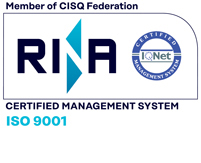Canada
AN OIL COMPANY IN REVERSE: DEEP SKY BUILDING CANADA’S FIRST DAC HUB
Deep Sky, a Montreal-based carbon removal project developer, is launching a $50-million carbon removal innovation and commercialization centre in Western Canada.Deep Sky Labs, planned for Innisfail, Alta., represents an industry first for the private development of scalable carbon dioxide removal (CDR) and the first commercial direct air capture (DAC) project in Canada. “Imagine the atmosphere is a bathtub overflowing with water. CO2 (carbon dioxide emissions) is the water,” said Phil De Luna, chief carbon scientist and head of engineering with Deep Sky.“When your bathtub overflows you can do two things, you can turn off the tap… or you can pull the plug.Advertisement“Emissions reductions, point-source carbon capture… biofuels, clean energy, electrification; all of it is turning off the tap. It’s reducing the flow of water into the bathtub.“But your bathtub’s already overflowing. You have to drain it at the same time.”Deep Sky’s goal is to accelerate the path to low-cost, low-energy intensity and highly scalable CDR to produce high integrity carbon credits — which other companies can use to offset emissions and meet their decarbonization commitments.Its estimated $50-million centre, on a 50-acre site, will look to get up and running this winter and can test up to 14 different DAC technologies. It’s expected to have the capacity to capture 3,000 tonnes of CO2 per year and operate for two decades. Airhive, Avnos, Phlair (formerly Carbon Atlantis), Greenlyte Carbon Technologies, Mission Zero, NEG8 Carbon, Skyrenu, and Skytree are eight tech firms from around the world that have already been selected for the project. “It’s a new space. There are these different kinds of technologies that are being commercialized. They all say they’re the best, but no one has tried them side-by-side,” said De Luna. “Before we build a large-scale commercial facility, we want to try before we buy.”How does it work?Phil De Luna explained the process for direct air capture works in three steps:First, fans pull in air.Second, CO2 emissions are captured in something absorbent, such as a filter.Third, the filter is regenerated or cleaned.“You have to apply energy to your filter to clean it,” he said. “There are all these different variations of chemicals and absorbent materials — that filter can look different.“The actual process could be different, the way that you move the air can be different. (ICE TORONTO)
Fonte notizia: https://www.energy-manager.ca/




